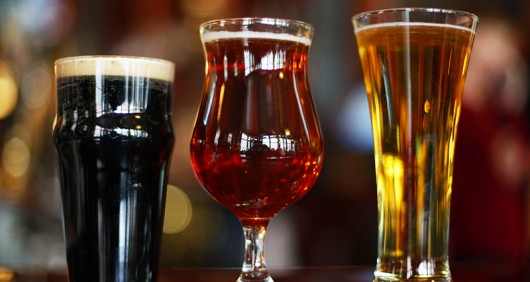
Ohio State researchers are aiming to gather data about the drinking habits of college students. Credit: TNS
How do you know when you’ve had too much?
A cross-disciplinary study is being conducted at Ohio State to help researchers understand how college students consume alcohol. Researchers hope to use the subsequent data to create wearable technology to alert students when they have had too much to drink.
John Clapp, associate dean for research and faculty development at OSU’s College of Social Work, is conducting the study. He has been researching the drinking behavior of college students for about 20 years.
Clapp and his team of researchers are working in tangent with engineers and data analysts to first examine the behaviors of students while they’re out drinking, and then use this information to form mathematical models that help predict how much students will drink so a device can intervene if necessary.
“The idea is to eventually come up with a phone app that helps students drink more safely,” Clapp said. “The app could strategically intervene to tell the user, ‘Hey, remember: You didn’t want to be hungover tomorrow. Maybe you should have a water.’”
In the past decade, Clapp has only been able to measure blood alcohol content using breathalyzers, which only provides a snapshot of how much alcohol a person has consumed.
By wearing an ankle device that takes sweat readings every half-hour for a whole night, Clapp is now able to paint a broader picture of how slowly or quickly a college student consumes alcohol.
Brent Leonard, vice president of Ohio Alcohol Monitoring Systems, works in conjunction with Clapp by providing the devices worn by students during the research studies.
“The device measures blood alcohol content by reading insensible perspiration,” Leonard said. “Several companies are currently working on making the devices smaller and easier to wear.”
For his current research, Clapp takes groups of student volunteers over the age of 21 and attaches a device to their ankles before they go out for the night.
“We just want it to be natural,” Clapp said. “Whatever happens, happens. That’s the point of the research and how we figure out natural drinking habits of students.”
Clapp said the advantages of conducting this research at OSU are the large undergraduate population, proximity to bars and large sorority and fraternity presence.
He also plans to conduct his research on other college campuses to compare behaviors, to see if there are regional differences in the way students drink.
Clapp’s goal is to turn this technology into a device similar to that of a Fitbit, the small watches that also measure data such as how many steps the one wearing the device takes in a day, as well as his or her heart rate and quality of sleep.
“We’re still a year or two away from this, but we’re trying to figure out the math now, so we can do those kinds of interventions,” Clapp said.
The device could interact with the user’s phone and be able to intervene in potentially dangerous situations, such as telling the user when they are unable to drive.
“The cool thing about this is that we’re not telling people to not drink,” Clapp said. “We’re trying to help them find the safest strategies to drink and help them stay out of trouble.”


